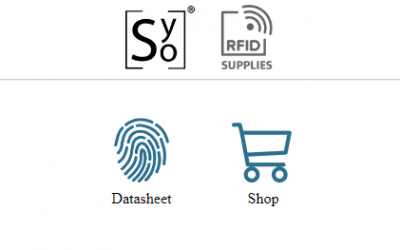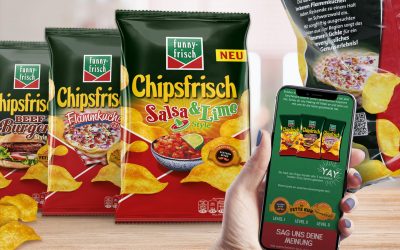The Experience Economy
Leading companies, independent of their market and customers are working harder to stage memorable experiences. The customer gets elevated to become the guest; the vendor turns into the host staging the experience. Staging the best experiences are quickly becoming the next battleground to dominate economic relationships and customer retention.
Experiences are distinct economic offerings and are different from services offered to customers and consumers. The economic value did evolve from extracting commodities, to making goods, to providing services. Staging experiences is the next iteration of this progression of economic value.
- Commodities are at the low end of the price spectrum; they are sold at market price and are undifferentiated offerings.
- Goods are more competitive than commodities. They serve specific needs and composition, quality and specification between vendors may vary. Vendors can charge a premium over the cost of individual commodities used to produce these goods. Goods are standardised to maximise economies of scale.
- Services are intangible, usually customised and delivered on demand. Unlike goods, services are not manufactured to be sold from stock and provide benefits to the customer.
- Experiences, unlike services, are revealed over a period, providing highly personal memories and delivering sensations. Experiences have a significant impact on the emotions of customers, helping to build unique, long-term relationships.
Many companies are now staging experiences that sell, using services and stores as stage and their goods as the props. Apple stores have been great in enabling people to interact with their products, using the store as stage and making the visit to the store a pleasant experience in itself. Free workshops and technical support are vital parts of their staging, elevating the experience of owning Apple products over the life of the product.
Nike built a basketball court in their Nike Town stores in New York. It got headlines like ‘Legoland for people who love sports‘ or ‘the Disney World of sneakers‘. Nike built a dedicated stage for customers to trial products, create a unique memory and shopping experience.
CUSTOMERS ARE WILLING TO PAY FOR AUTHENTIC EXPERIENCES
When looking at what your company offers to customers, a critical question to ask yourself is: What would you do differently, if you would charge admission to your store? In many cases talking about the customer experience in their store, retailers are limiting this to the products on offer, the facilities and services rendered. They fail, to deliver authentic experiences customers are willing to pay for.
Continuous Connections Enable Great Experiences
Many companies only interact with their customers episodically, and communication is often single-sided to tell customers to ‘buy what we have’. This model is short lived and doesn’t leverage the opportunities continuous connections enable today.
Effective connected strategies do
- Respond to desire effectively and with minimal friction. Amazon 1-click option is a perfect example of how Amazon efficiently responds to the customers’ desire. Other great examples are rideshare services like Uber and Lyft, providing transportation services within minutes through mobile apps.
- Curate offering based on knowledge about the customer such as past purchases or patterns. HP, for example, offers ink and toner cartridges for your specific printer model and toner or ink levels.
- Coach behaviour through reminders to make appointments, re-order a consumable or incentivise specific behaviour. Airlines have transitioned from selling the last seats available on a plane for a bargain to lower the cost for earlier bookings. For connected printers, HP provides email reminders that your ink level is down, avoiding the frustration of running out of consumables.
- Automate execution with customer consent to monitor devices, items or supply levels. Again, HP has done a great job where connected printers can automate the process to purchase your consumables. With a subscription fee per page, HP will automatically replenish your ink. In the industrial and healthcare space, there are many examples of vendor managed inventories, where customers are billed for the products they consume and replenishment is automated.
Repetition is an additional fundamental element of these customer journeys. Companies are forming an ongoing relationship and maximise customer retention.
The Role of the Internet of Things
Disney is using their magic bands to deliver customised experiences to their guests. Guests in their parks and hotels can use RFID wristbands to unlock rooms, pay for items and have priority access to rides. It also allows the company to learn about each guests interests and preferences, helping them to recommend their schedule or link photos taken on rides, improving the experience they stage for each guest.
To connect to customers, Nike created a wellness ecosystem of sensors, apps, and devices. Nike efficiently uses continuous connectivity to deliver health and fitness services. The company has transformed from a provider of athletic gear to a trusted health and fitness coach, staging experiences using their goods as props.
I already discussed many of the examples of how HP printers can connect to the internet to enable a broad variety of services. As discussed before, services in itself are not experiences, in the example of HP, I would consider it fair to say, that the combination of an effective strategy of continuous communication, paired with the flexibility of services offered create a memorable experience owning one of their printer products.
Würth created connected solutions for their C-Parts supply for industrial customers using RFID tags. Würth can monitor stock and quickly adapt to changes in demand, automating replenishment and optimising shelf space.
Retailers are often struggling to transform the shopping experience into something pleasant and memorable. This video the SAP CX Labs team created a few years ago shows how technology vendors created innovative solutions. Unfortunately, in conversations with traditional retailers, it becomes apparent many are like the deer in the headlights, overwhelmed facing the changing competition. Many retailers still struggle with the foundational questions to know what they have and where they have it.
Conclusion
Digital transformation is at the core of all the positive examples. Companies digitalised core business processes and changed how they analyse data and leverage the information to improve operations and execution.
Customers allowed businesses to collect data and in return received improved services. Companies connected products to their digital twin, optimising supply to ensure the right product is at the right place at the right time. Building the basketball court in one of their New York stores enables Nike to deliver a distinct shopping experience. This experience would, however, quickly turn sour, if the products a customer seeks are not available to test and in-store service levels couldn’t live up to expectations.
Successful companies have transformed how they operate or engage with customers. Many have improved services; few are delivering truly memorable experiences. Continuous connectivity and the IoT will further enable leading companies to stage and monetise better experiences.
Merging online and offline, enabling customers to have a seamless experience across all channels, is one of many challenges companies still try to resolve.
Finally, companies need to connect products to their digital twin to effectively use continuous connections in their communication with customers.

























